Cooking up Amazing Trips contains affiliate links. If you purchase through these links, I may earn a commission at no extra cost to you. See my Disclosure Policy for more information. Thanks for supporting my blog!
Manchester in 2 days
Are you looking for a 2-day itinerary for Manchester? Look no further! As a long-time resident, I can help you explore the city.
As always, I will give some interesting information about the city and then detail the itinerary (with the map) so that you can see everything most important in Manchester in 2 days.
If you are hesitant about visiting Manchester, I recommend reading my article Reasons to Visit Manchester, where I provide reasons to come and also highlight memorable events that have taken place here.
If you follow me, you already know that my routes are at a reasonably fast pace. So, remember, if you want to take it slower, you will need more time.
This is the list of everything you will find in this article:
A. Manchester – Information of Interest

Location


Manchester is located in northwest England and is part of Greater Manchester County. It is the third-largest economy in the UK, behind London and Birmingham, and the third most-visited city by foreigners after London and Edinburgh.
Area
115.5 km².
Population
552,858 inhabitants in Manchester and 2.8 million inhabitants throughout ‘Greater Manchester’, according to official data from 2023.
Demonym
Mancunian.
Language

Manchester is a city located in England, which is a part of the United Kingdom. The primary language spoken is English.
Remember that you can check the language spoken in each country using the tables that I attach to my articles Countries by Language and Best Time to Go.
B. Manchester – Practical Information
Currency
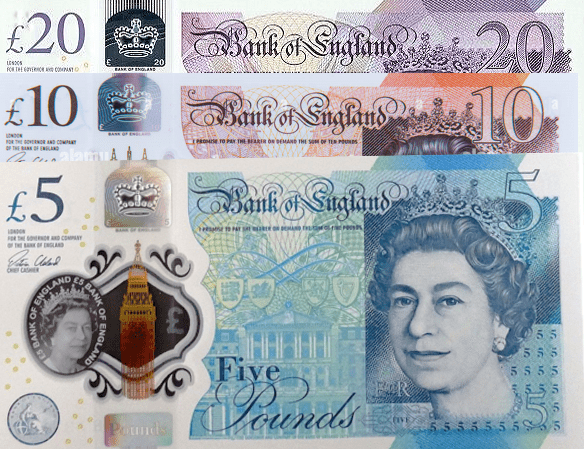
The currency that is used here is the British Pound Sterling (GBP).
In my post Currency exchange, cards and cash abroad (Complete Guide), there is a table that allows you to see the currency used by entering the name of the country you are interested in. Additionally, this article provides all the essential information you need to know about money and travelling.
Plugs and Voltage

In the United Kingdom, the plugs are British style: type G, with three legs.
The voltage is 220-240 volts, and the frequency is 50 Hz.
Remember that you can refer to my article Plug Types by Country to find out about the different types of plugs used in each country and the corresponding voltage. This will help you determine if you need an adapter and the specific type required. You can find this information in the Travel Logistics section, along with everything else you might need to ensure your trip goes smoothly.
When to Visit Manchester and for How Long

*️⃣ The best time to visit Manchester is from April to September, during spring and summer when the weather is warmer, and the streets are bustling with festivals and outdoor events.
According to official data, it rains for an average of 140 to 150 days yearly, about 12 rainy days per month. However, in my experience, it seems to rain more than that. So remember to include an umbrella or raincoat in your luggage!
If these dates don’t work for you, and you would instead pick a different travel destination based on the most suitable time to visit, I recommend checking out my posts Best Time to Go and Where to Travel Each Month. It will help you plan your trip better.

*️⃣ The city centre is compact, making it easy to explore on foot, and you can see the most essential things in a couple of days. However, I recommend extending your stay if you plan to attend one of the many festivals or a football match.
In my posts, How Many Days I Need to Visit Each Country and How Many Days I Need to Visit Each City, I explain the number of days needed to visit each country and the most tourist cities.
✈️ Flights: Compare the best prices on flights using Kayak.
C. Manchester – Cultural Information
Origin
In 79 AD, the Romans constructed a fort on the banks of the River Medlock, situated between two hills resembling breasts. They named this fort “Mamucium”. Later on, when the Normans arrived, they founded a new settlement and added the word “Chester” to the end of the name, indicating the location of a Roman fort. And so, Manchester was born.
It was granted city status in 1853 and became known as “Cottonopolis” in the late 19th century due to its significant role in the cotton industry.
Coat of Arms
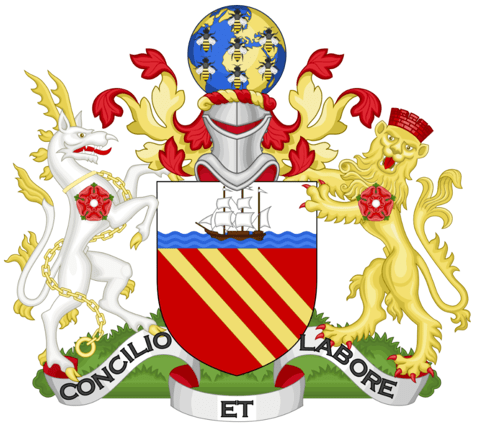
The shield was granted in 1842 by Queen Victoria.
The red-gold stripes on the Manchester coat of arms represent the arms of the Lords of Manchester, who ruled the city before 1301. Above the stripes is a ship with full sails, symbolising trade and enterprise. Above the boat, a globe covered in bees represents the worldwide exportation of the city’s goods, where bees symbolise activity. On either side of the shield, you can find an antelope and a lion, which are derived from the arms of King Henry IV, Duke of Lancaster.
The motto means “By advice and work” and derives from Sirach 37:16: “Let reason be the beginning of every work and let advice go before every action”.
Manchester adopted the bee as a symbol during the 19th century, representing its industrial and community nature. The bee can be found all over the city, from litter bins to the mosaic floor of City Hall.


D. Manchester – 2-Day Itinerary + Map
Here is a map showing each day in a different colour and numbers indicating the order of places to visit.
🛏️ Accommodation: Find hotels and unique stays at great prices in Manchester with Booking.com.
Day 1 in Manchester
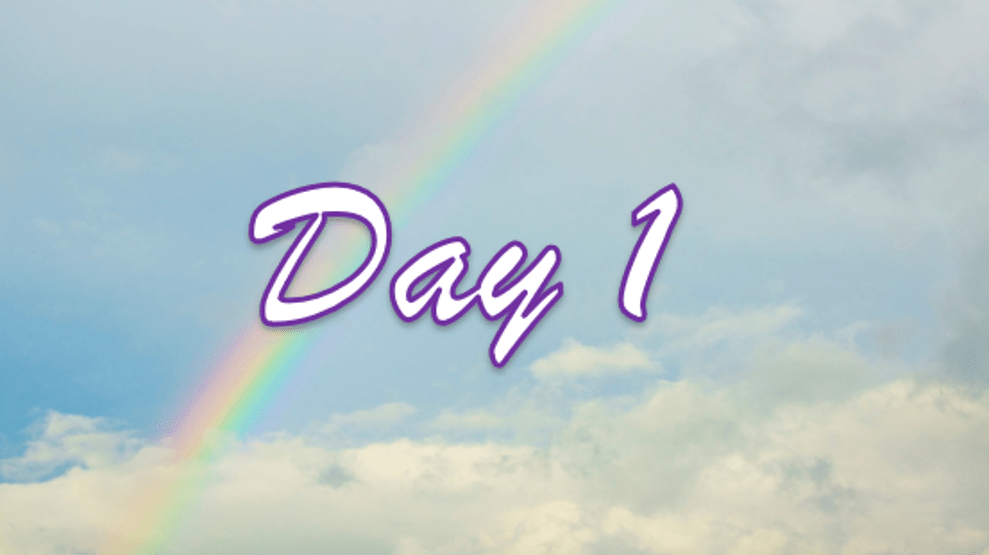
1 — Manchester Cathedral

We will start the route with one of the essential places in Manchester: its Cathedral.
It is a church of mediaeval origin (1215) that has been restored several times.
In 1421, King Henry V permitted to convert the parish church of St Mary in Manchester into a collegiate church dedicated to St Mary, St George, and St Denys. As a result, the church’s official name became the Cathedral and Collegiate Church of St Mary, St Denys, and Saint George in Manchester. Easy to remember, right?
The highlights of its interior are:
- The central nave.
- The choir of the 16th century and its wooden stalls.
- Its stained-glass windows. They are relatively new, as the original ones were destroyed in a bombing in 1940 during World War II.



You can enter for free, although a £5 donation is suggested. However, check the schedules beforehand, as many events occur here, and some require admission. Additionally, there’s a cafeteria inside the building.
2 — Chetham’s Library

Continuing north, about a 4-minute walk away, we find the world’s oldest free English-speaking public library: ‘Chetham’s Library’.
It was established in 1653 as per the final wishes of Humphrey Chetham (1580-1653), a wealthy Manchester textile merchant, banker, and landowner.
In the will, he stipulated that the library should be “for the use of scholars and other good people” and that nothing would be required of anyone to enter the library.
It offers the possibility of taking a guided tour, but it is open only from Monday to Friday.
Check schedules and prices on the library page.
3 — The National Football Museum

In front of the library, we will see a glass building shaped like a ramp: The National Football Museum.
It is not a surprise that Manchester, a football city, has a football museum, which is highly recommended for lovers of this sport.
Here, even the fish play football!
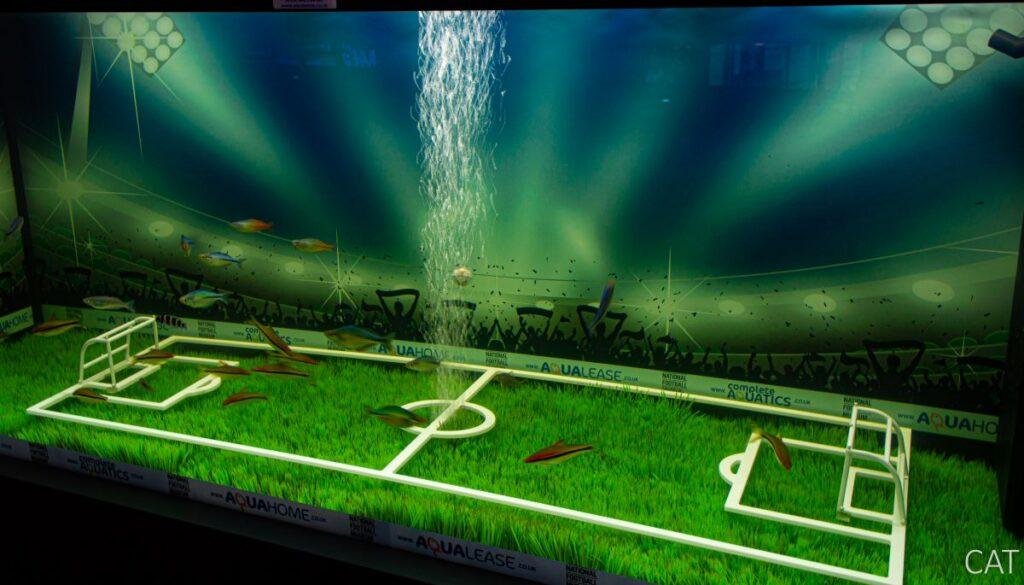
It features a vast display of objects, interactive games, and diverse exhibitions and workshops suitable for all ages.
It is open every day of the week. In the past, admission was free, but today, there is a fee to enter, with some exceptions.
4 — Printworks

Across Coronation St is the iconic building called ‘Printworks’.
Until 1986, it was a prominent newspaper printing press, then remained unused for ten years until it was later transformed into today’s leisure centre.
It boasts over 20 bars, restaurants, nightclubs, and Europe’s second-largest IMAX screen. Furthermore, in 2024, they have just inaugurated the largest digital ceiling in Europe.


It’s an interesting place, even if you only glimpse the inside while passing by.
5 — Exchange Square

Opposite Printworks, we find ‘Exchange Square‘. This square was built in 1999, following the 1996 IRA attack, in which a bomb destroyed much of central Manchester.
Today, the area is a lively shopping destination with luxury department store branches such as Selfridges and Harvey Nichols. It also boasts several bars and restaurants with terraces, making it the perfect spot for a drink, especially when the weather is pleasant.
6 — Shambles Square

Adjacent to Exchange Square is Shambles Square, another of the busiest squares, home to four popular pubs: Crown & Anchor, The Old Wellington, Sinclair’s Oyster Bar and The Mitre Hotel.
In the Middle Ages, this place was the street of butchers, hence the origin of its name “Shambles”.
Here are the only two of the city’s surviving buildings that date back to before 1800 — the ‘Old Wellington Inn‘ and the ‘Sinclair’s Oyster Bar‘. Remarkably, both of these buildings managed to survive the Nazi bombings of 1940, the urban reforms and even the IRA attack in 1996. However, in 1999, both buildings were dismantled and moved to a new location, around 100 metres from their original spot.
It has become a meeting place for fans of foreign football teams when they come to the city for a European competition.
7 — St Ann’s Square

In front of Shambles Square is a pedestrian street called ‘New Cathedral St’ that, if we follow for about 4 minutes, will take us to St Ann’s Square.
The square is the heart of one of Manchester’s most fashionable shopping districts. In the early 80s, it was the second street in the city centre to be converted into an exclusively pedestrian zone.
Once a hub for cotton and textile trade, the Royal Exchange gallery now houses various dining options, boutique shops, and popular retailers, offering visitors a diverse shopping, eating, and drinking experience.
8 — Deansgate

If we turn left from the square, we will reach one of the city’s main avenues: Deansgate.
The central mile-long street hosts many civic celebrations, including sporting events, Gay Pride, and Manchester Day parades.
In addition to various shops and museums, it is home to some of the trendiest bars in the city, making it an ideal place to go out on weekends.
Noteworthy:
- Spinningfields, the city’s financial centre, is in the west. It’s a popular destination for shopping and entertainment, with the city’s most fashionable bars, restaurants, and clothing stores from international luxury brands.

- Towards the end of the street on the left is Deansgate Locks, a lively place always full of life with bars and a comedy club.

- John Rylands Library will be our next stop, which I will explain next.

9 — John Rylands Library


Located in the heart of the city, on Deansgate, it opened to the public in 1900. Enriqueta Rylands founded it to honour her husband, John Rylands, one of the most successful businessmen in Victorian England, who died in 1888.
The library has been a part of the University of Manchester since 1972, and it is currently the third-largest academic library in the United Kingdom. Some notable items in its collection include first editions of books by Charles Dickens and the “Saint John Fragment”, one of the oldest texts of the New Testament.
The interior of the building is decorated with Victorian neo-Gothic art, which is stunning. It has a certain charm that might remind you of the Harry Potter movies, even though it was never in any of them. Be sure not to miss it; it will transport you to a different era and leave you in awe.
Admission is free, but check the schedules on their website because they close several days a week.
10 — Albert Square and Town Hall

Walking east for about 5 minutes from the library, you will reach Albert Square, where most significant events occur.
At the heart of the square lies the Albert Memorial, built to honour Prince Albert, the King Consort of Queen Victoria. The square was named after the Prince and was explicitly designed to provide ample space for the monument between 1863 and 1867. The town hall was constructed later, between 1868 and 1877.
The town hall dominates the square and is regarded as one of the finest examples of neo-Gothic architecture in the United Kingdom. Visitors can admire the stunning mosaics, sculptures, and murals by the artist Ford Madox Brown adorning the Great Hall and the Sculpture Room inside the town hall. There is even a cafeteria for those in need of refreshments.
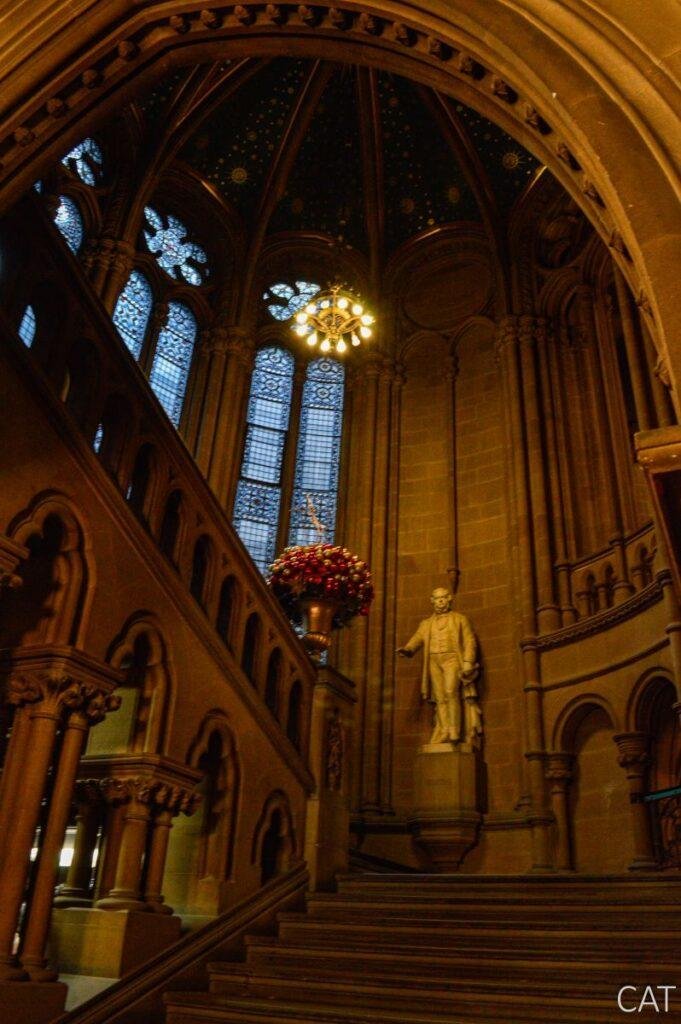
Currently, both the square and the town hall are closed for renovation. However, its reopening is scheduled for 2024.
11 — St Peter’s Square

St. Peter’s Square is located behind the town hall building and is home to several noteworthy places:
- The Manchester Cenotaph. Monument honouring those who fell in the First World War.

- The statue of Emmeline Pankhurst, ‘Rise Up, Women‘. In 1903, Emmeline Pankhurst founded the Women’s Social and Political Union, responsible for the suffrage movement that helped give British women the right to vote.

- Manchester Central Library is a circular building modelled after the Pantheon in Rome. It was completed in 1934 and offers visitors a cosy reading space and a cafeteria.
- The Midland Hotel. It is considered one of Manchester’s most iconic buildings. It was constructed between 1898 and 1903. Interestingly, there are rumours that the infamous dictator, Adolf Hitler, chose this hotel to serve as his Nazi headquarters in Great Britain during World War II. Many speculate that this is why the surrounding area was spared from bombing during the war.
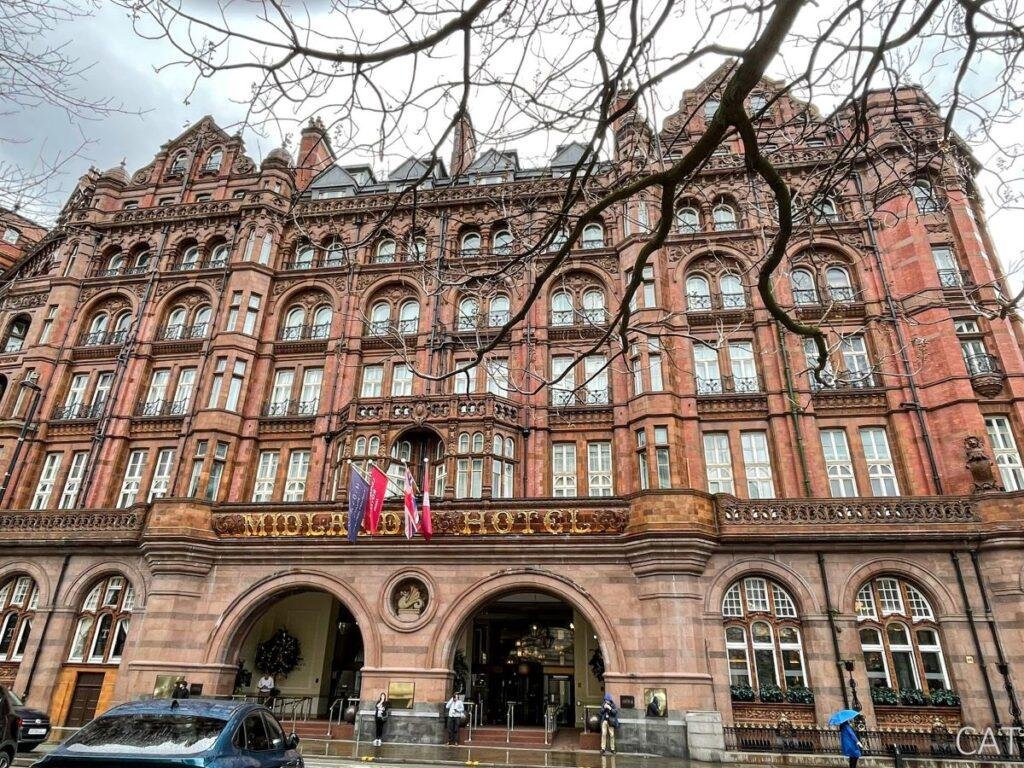
Unfortunately, the area around the square has a tragic history. The Peterloo massacre (1819) took place here, the worst violent incident ever to occur at a political meeting in the United Kingdom.
If we head northeast on Mosley St, we’ll come across the Manchester Art Gallery at the corner of Princess Street. Unless you really want to visit this museum today, I suggest leaving it for another day in the city. You’ll find my recommendation for visiting the Gallery at the end of this article.
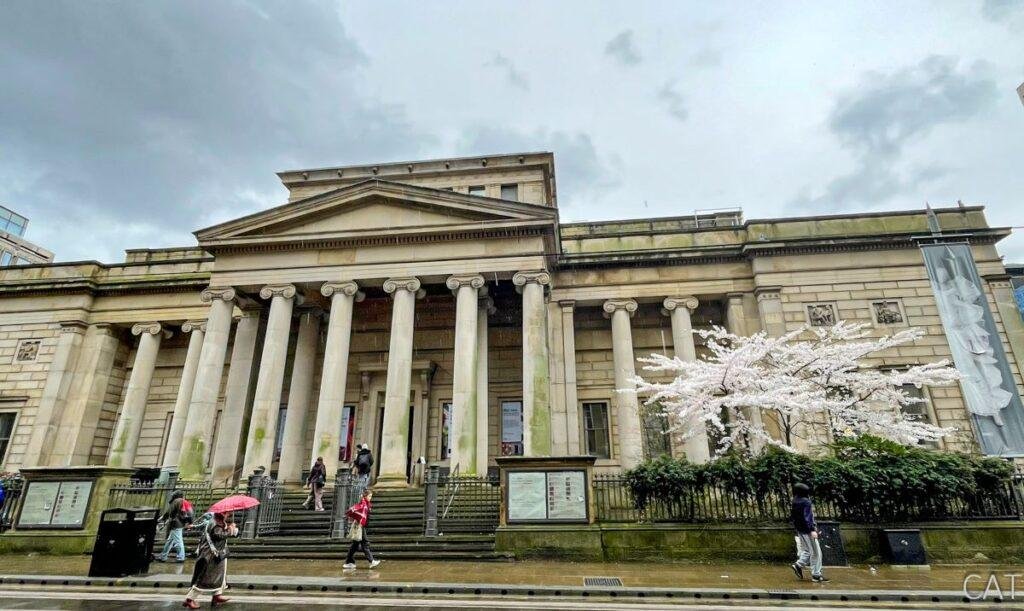
12 — Chinatown

Still on Mosley St; once you have passed the Gallery, turn onto Nicholas St to enter Manchester’s Chinatown. It is the second largest in England, after London, and the third in Europe.
On Faulkner Street, you can find the ‘Paifang‘, a traditional Chinese arch that was officially opened in 1987. It was a gift from Beijing and remains the only one of its kind in Europe.
The street boasts a range of shops, supermarkets, karaoke venues, and various excellent restaurants.
13 — Piccadilly Gardens

A few minutes from Chinatown, we find the second most important Square in Manchester: Piccadilly Gardens.
It is a green space in the city centre, with a bus station and a tram stop.
The area was initially designed as a sunken ornamental garden, but it was reconfigured in 2002 by Japanese architect Tadao Ando, who added a water feature and a concrete wall. This wall, sometimes called the “Berlin Wall”, has had many critics over the years and continues to do so even now.
Between 2013 and 2015, it had a big wheel, but it was dismantled due to disagreements between its owners and the city council.
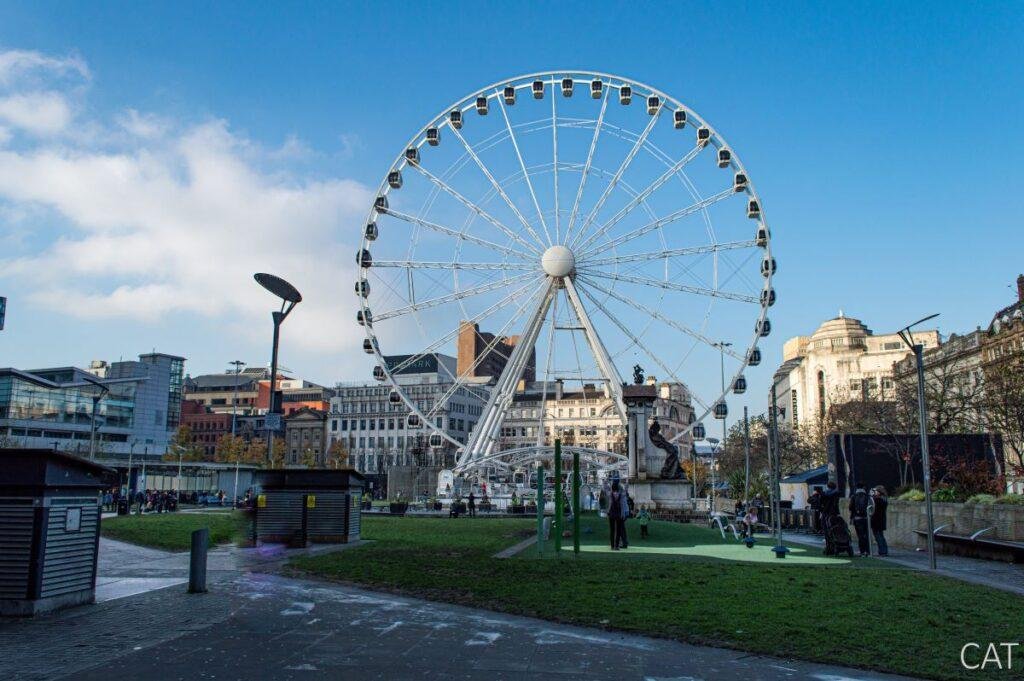
We can find a street food market that operates from Wednesday to Sunday, and during Christmas, it hosts a significant portion of the traditional Christmas markets.
To the west of our location lies Market Street, a popular shopping destination in Manchester. It is home to various well-known shops and the Manchester Arndale, a shopping centre with food establishments and entertainment venues.
The pedestrian street is very lively and often bustling with street performers.
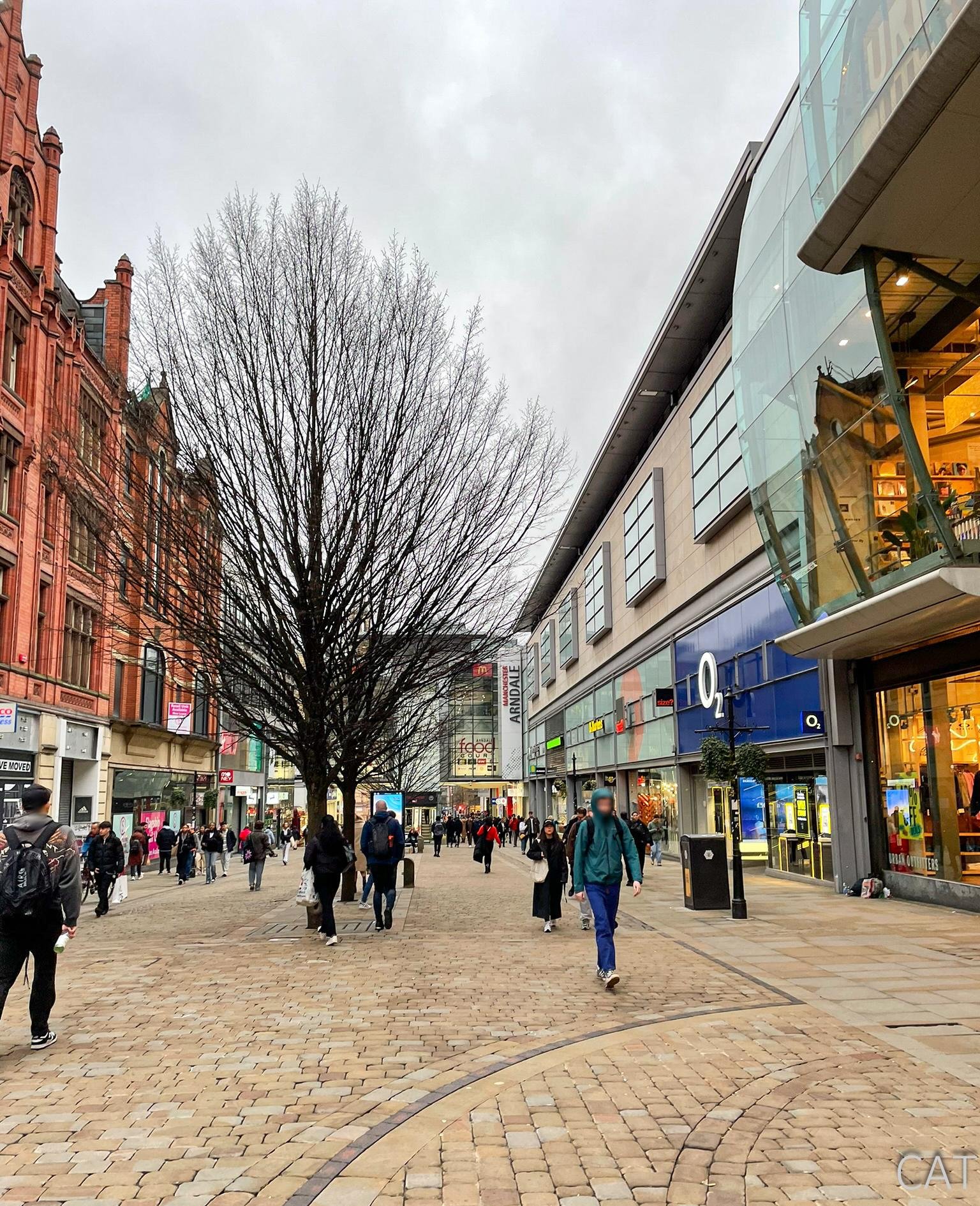
14 — Northern Quarter




We will end our first day of the tour in the vibrant Northern Quarter, known for its street art, bohemian bars, and independent record stores. This neighbourhood is the heart of the city’s hipster culture.
It’s a bustling area with many restaurants and lively music venues where you can hear emerging and established artists.
In the neighbourhood, you will also find:
- Afflecks Mall (52 Church Street). A five-story market with alternative stores.

- Mackie Mayor (1 Eagle St). It was a former market that today consists of several restaurants with communal dining tables.
Day 2 in Manchester
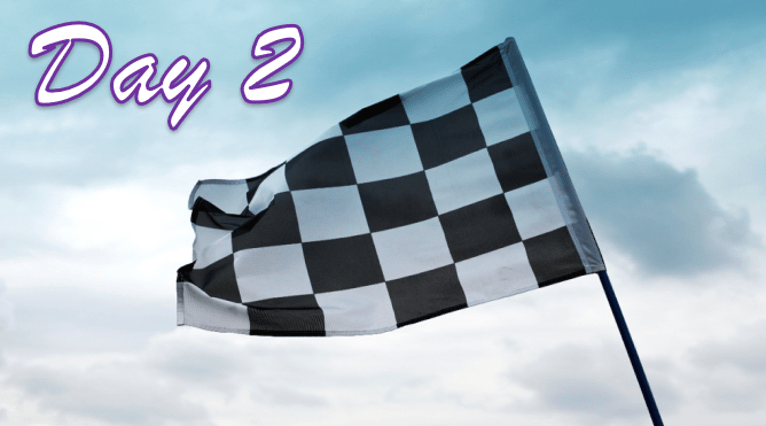
1 — MediaCityUK and Salford Quays

We will start our second day in Salford Quays, an area in Greater Manchester where the shipyards used to be. The area can be easily accessed by tram, with the nearest stop being MediaCityUK.
Today, the area boasts beautiful gardens, charming bars and restaurants, exciting leisure activities, and even BBC studios. The peaceful canals make it a perfect spot for a stroll.
Located on the banks of the River Irwell, you can take a boat ride and even reach Liverpool.
2 — Imperial War Museum North
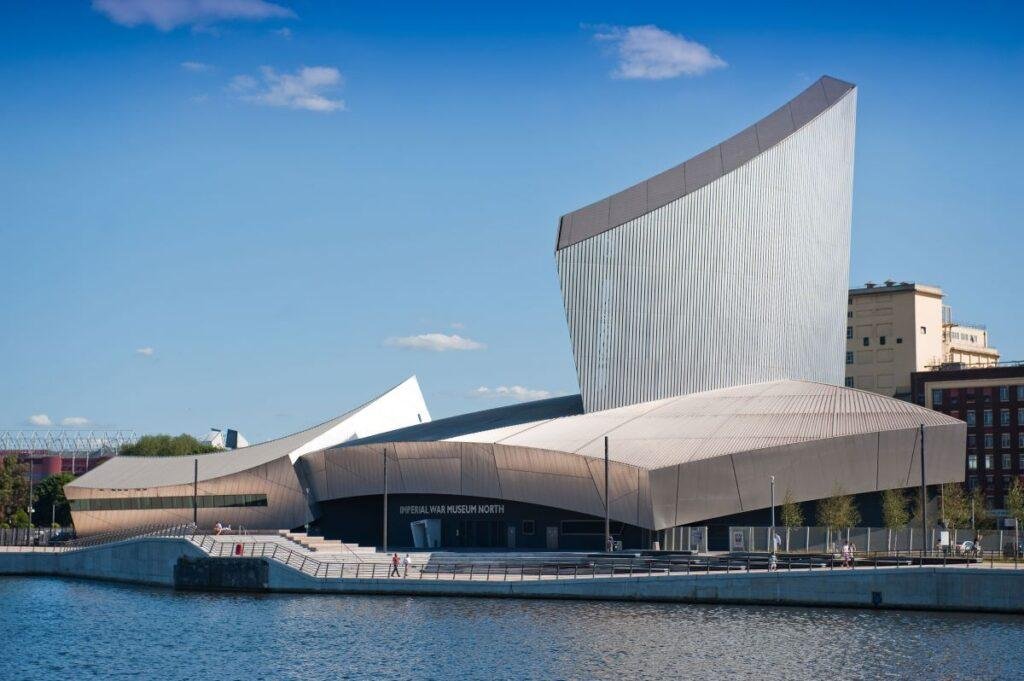
Crossing to the other side of the canal is the Imperial War Museum North (IWM North). This iconic aluminium-clad building represents a globe torn apart by conflict.
In the museum, you can trace the history of conflicts involving Great Britain and the Commonwealth from the First World War to the present. The exhibits display a chronology of objects that have witnessed historical events.
It opens every day, and admission is free.
3 — Old Trafford

Around a 15-minute walk from the museum is one of the world’s most famous stadiums: Old Trafford.
With a seating capacity of nearly 76,000, this football stadium is the second largest in the UK, only behind London’s Wembley Stadium. It’s a must-visit destination for football fans.
Also called the ‘Theatre of Dreams’, it is the home of Manchester United or ‘Red Devils’, one of the most successful teams in the history of English football.

It was opened in early 1910. However, due to bomb damage during World War II, the club shared a stadium (the ‘Maine Road’) with local rivals Manchester City from 1941 to 1949.
You can tour the stadium and visit its museum, but book beforehand to avoid disappointment. Here is the link to their website.
From here, we will take the tram back to the centre of Manchester, where we will visit one of the essential neighbourhoods: Castlefield. The tram stop is Castlefield.
4 — Castlefield


Castlefield is a peaceful, serene neighbourhood perfect for a stroll. The area boasts canals, canal-side bars, and green spaces.
Among the main attractions of this neighbourhood are:
- The Bridgewater Canal (1760). This canal, which connects Runcorn, Manchester and Leigh, is believed to be the first authentic canal in the UK, and some people even consider it the first canal in the world. Around the canal are many bars and restaurants offering terraces where you can take a break, relax and enjoy a drink next to the canal.
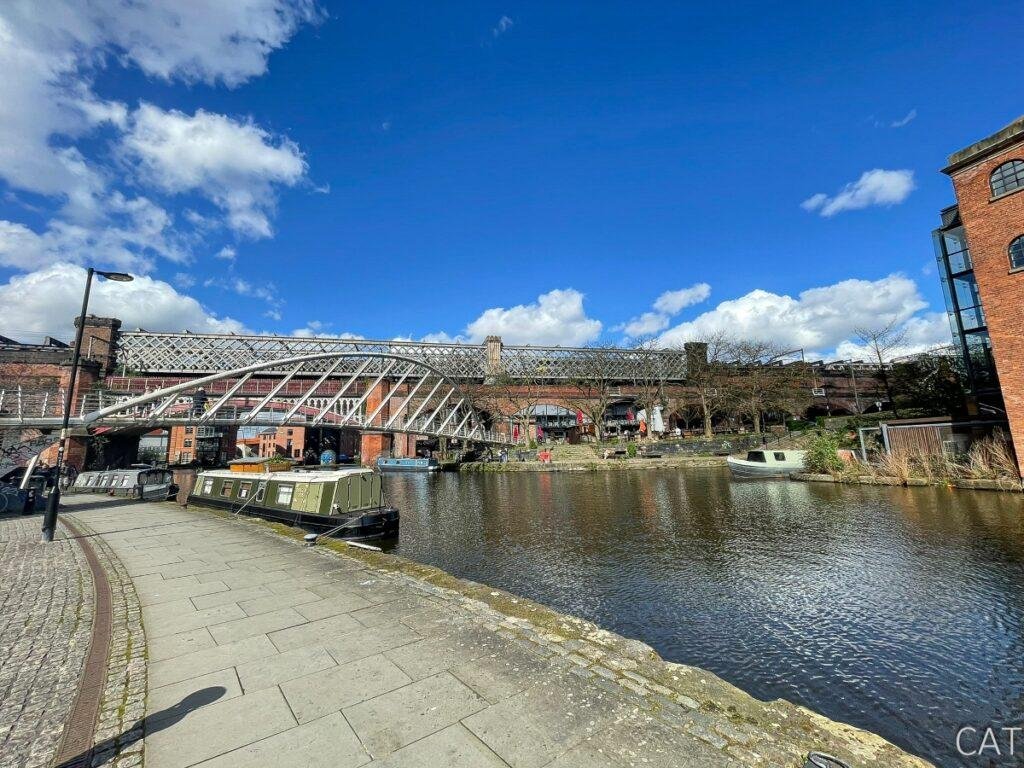
- The ‘Castlefield Bowl’ is an open-air canal-side venue hosting rock and classical concerts.
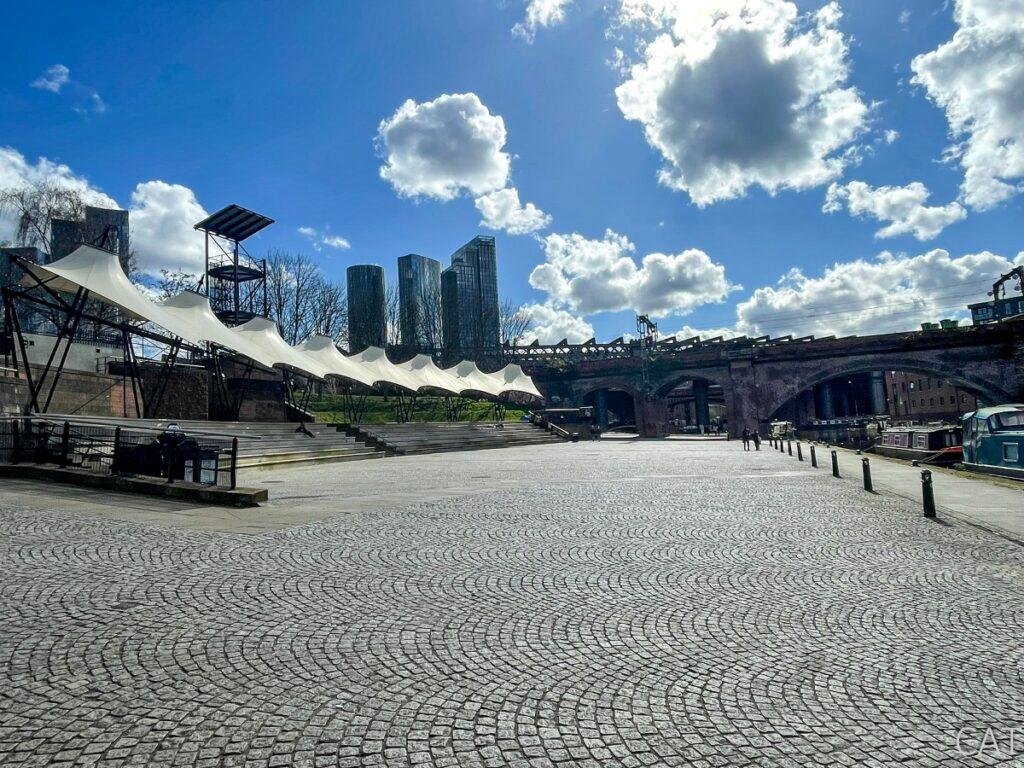
- The ruins of the Roman Fort and the rebuilt fortress of Mamucium, from which the city gets its name.

- The Museum of Science and Industry. It consists of several buildings with exhibitions showing the city’s science, technology, and industry development. One of the first passenger railway stations in the world (between Manchester and Liverpool) was located here. Additionally, admission is free.

5 — Beetham Tower

This skyscraper, built in 2006, was the tallest in Manchester until 2020.
The building is commonly called the Hilton Tower because the Hilton Hotel occupies the first 23 floors. The remaining floors up to the 47th are residential apartments. On the 23rd floor, you’ll find a bar and restaurant called ‘Cloud 23‘, also owned by the Hilton. Although it may be a bit expensive, it’s worth visiting for the spectacular views of the city.
6 — Gay Village

To the east, on Canal St, we will find the Gay Village, the heart of Manchester’s vibrant LGBTQ+ community.
No matter your sexual orientation, this neighbourhood welcomes everyone with acceptance and respect. You’ll find many cosy bars, clubs, and cultural places here.
7 — Etihad Stadium

The ‘City of Manchester Stadium’, known since 2011 as Etihad Stadium for sponsorship reasons, is the home of Manchester City and the ‘citizens’ or ‘sky blues’.
Although it doesn’t have the same history as its rivals’ ground, if you are a Manchester City fan or are attracted by their recent achievements, you may be interested in visiting this stadium, which can be easily reached by tram.
Located to the east, it was built in 2002 for the Commonwealth Games and can accommodate approximately 53,400 people.

They offer guided tours that can be booked directly on their website.
With this, we have completed the ‘Manchester in 2 days’ itinerary. But below are some additional places to visit if you have more time in the city.
E. Other Places to See in Manchester (additional days)
Manchester Art Gallery

The Gallery stands out for its collection of Victorian art. It also organises temporary exhibitions and has a part dedicated to the Costume Museum.
Manchester Museum
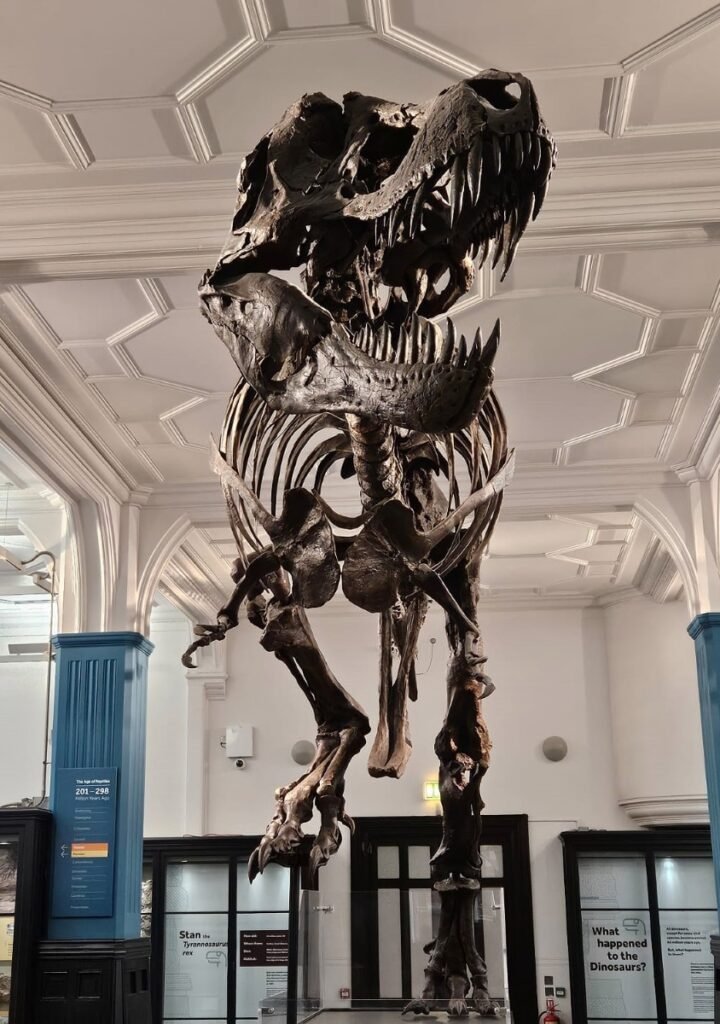
Belonging to the University of Manchester, it is over 130 years old and one of the largest university museums in the UK.
The museum’s collection includes over four million objects spanning millennia, from dinosaur skeletons and mummies to live reptiles and plants worldwide.
Admission is free.
People’s History Museum
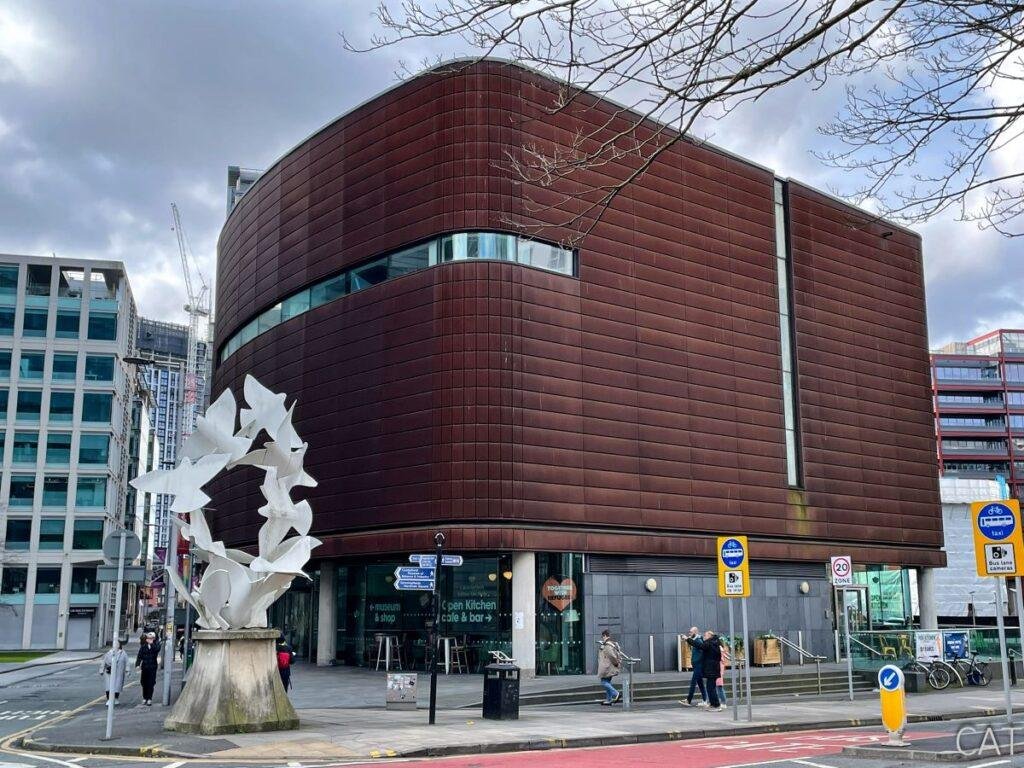
The museum celebrates the stories of people who have united throughout history to defend ideas and achieve a more just world. It tells the story of democracy in Britain, past, present, and future.
Heaton Park
Manchester’s largest urban park, covering 243 hectares (600 acres), is perfect for relaxing walks. Its playgrounds, lake, and golf course make it an excellent place for families to play.
Trafford Centre
If shopping is your thing, besides the mall on Market St, the Arndale Trafford Centre is much bigger and situated on the outskirts. With over 200 shops, cinemas and over 60 restaurants, it is the largest in the UK by retail space.
Surroundings
Some good excursion destinations from Manchester include Liverpool, Chester, and York.
You may also want to look at my article Reasons to Visit Manchester, which lists the city’s most important festivals and events.
I hope you enjoyed this itinerary.
F. Ready to Book your Trip?
To help you organise your adventure, I’ve gathered the best tools I use and recommend for booking flights, hotels, local transport and more. These links support this site at no extra cost to you.
🧳 Book Your Trip Here
- ✈️ Flights: Compare the best prices on flights using Kayak.
- 🛏️ Accommodation: Find hotels and unique stays at great prices worldwide with Booking.com.
- 🚐 Transfers: Pre-book your airport or city transfers to avoid stress on arrival with Welcome Pickups.
- 🚗 Car Rentals: Explore destinations at your own pace by using Discover Cars or Auto Europe to compare reliable car rental providers.
- 💺Transport (Bus and Train Tickets): Compare schedules and easily book intercity bus and train travel with Omio.
- 📷 Tours & Activities: Book fun experiences, guided tours, and skip-the-line tickets in advance with GetYourGuide or Viator.
- 🌐 Internet Connection: Stay connected abroad with eSIMS from Airalo.
Safe travels! 🌏✈️
Additional Information
You can also check my itineraries in Itineraries. Here, they are classified as City Guides and Country Guides.
Alternatively, in the section Destinations, they are classified based on the type of trip:
- Amazing Experiences. It covers the most extensive and complete trips.
- Beach and Sea. For those who prefer quieter activities by the sea.
- City Breaks. Short trips with a single destination.
📌 If you prefer to see them separated by continents, check them in Portfolios.
Remember to check the Cook up Your Trip. There, you will find everything you need to organise your trip from start to finish.
If you need any clarification, you can leave me a comment or fill out the contact form. I would be glad to help you. 😊



